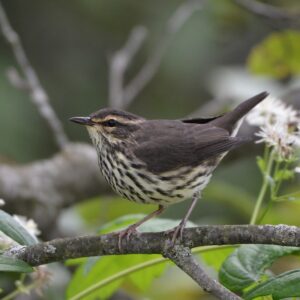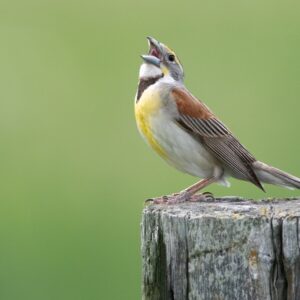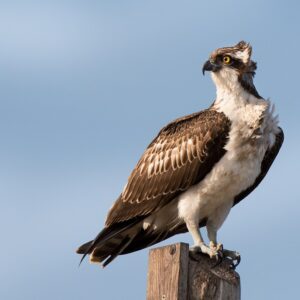Birding at Beaverhill Bird Observatory
[two_third]From our friends at Nature Alberta comes a guest blog post about a day spent discovering the natural wonders of the Beaverhill Bird Observatory, which lies within the Beaverhill Important Bird Area (IBA). The IBA is known as a critical staging area for waterfowl and supports substantial numbers of shorebirds. The Beaverhill Bird Observatory has been monitoring landbird migrations since 1986. Nature Canada has actively supported the Beaverhill Important Bird Area with funds for research and outreach through the Charles Labatiuk Endowment Fund. Kurt Yakimovich, Bird Conservation Program Assistant, Nature Alberta, shares his experience birding in this unique wildlife area. This post originally appeared on Nature Alberta’s website.
It was my first real experience birding, and the pristine beauty of the Beaverhill area provided me with great memories. Located approximately an hour’s drive Southeast of Edmonton near Tofield, the Beaverhill Bird Observatory (BBO) was easy to find. Excited on our drive out, Erin Campbell—Nature Alberta’s Bird Conservation Program Coordinator—and I started identifying birds including California gulls, Black-billed Magpies, and Yellow-headed and Red-winged Blackbirds. Upon arriving we parked in the outer parking lot—a lovely patch of grass in a field— and trekked into the forest searching for the biologists that call BBO home.
We found them hard at work extracting birds from mist nets, taking measurements, and banding. They had been up since the crack of dawn working on the Monitoring Avian Productivity and Survivorship (MAPS) program. Amélie—BBO Executive Director—was holding a Least Flycatcher and taking measurements while Kevin— Amélie’s field assistant —was recording the data. We were able to join them for the last few hours of their banding session and got a chance to see their mist nets while tromping around more of the area’s trail systems, marked with pink flagging tape.
After that we were treated to a tour of BBO’s lab and facilities; with no running water or permanent structures it had a nice rustic quality. While chatting, we heard a unique and musical bird call which was identified by Amélie as a Baltimore Oriole. She then described the bright orange and black color of this species to us, which we were later fortunate enough to see.After lunch, we said goodbye to the BBO staff and headed out on our own to explore the rest of the Natural Area’s trail systems and diverse wildlife. We spotted garter snakes, huge bumblebees, mosquitoes, and butterflies, in addition to many bird species—which we were able to positively identify using our new birding skills. Our list at the end of the day included Blue-Winged Teals, Northern Shovelers, Common Ravens, Savannah Sparrows, Brown-Headed Cowbirds, American Robins, Mountain Bluebirds, Tree Swallows, and one Pectoral Sandpiper.
Being close to Edmonton, the Beaverhill Natural Area is a great place to visit and enjoy nature. The friendly staff are a plus too, willing to accept volunteers and assist visitors by sharing their knowledge and passion.
Learn more about the Beaverhill Bird Observatory.[/two_third] [one_third_last]
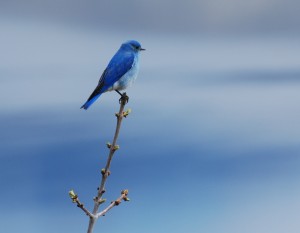
Mountain Bluebird by Dave Polster-Kamloops
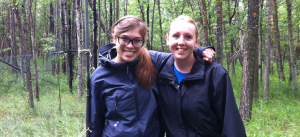
Amélie Roberto-Charron, Executive Director of the Beaverhill Bird Observatory (left), Erin Campbell, Nature Alberta Bird Conservation Program Coordinator (right)
[/one_third_last]

